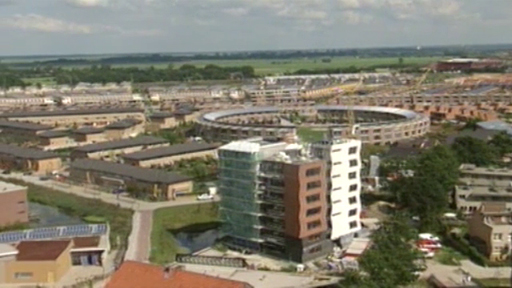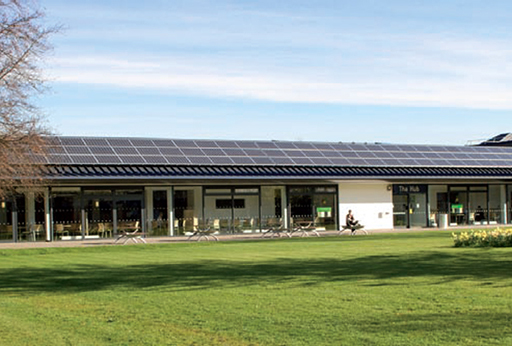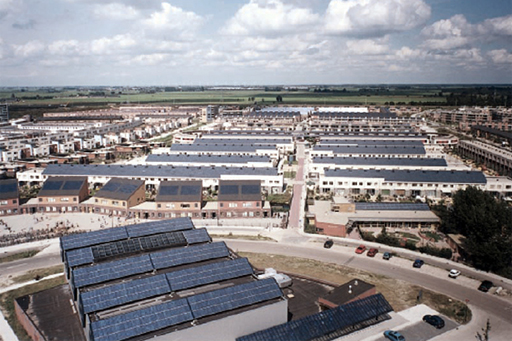5 PV systems for non-domestic buildings
The large development at Amersfoort in the Netherlands shown in Figure 7 has a total of 1 MW of PV generating capacity installed on the roofs of houses, schools and community buildings. The PV arrays are owned by the local electricity company, which pays homeowners for the electricity they produce.
Watch this video for more details of the Amersfoort PV project. The first speaker is Professor Erik Lysen of the University of Utrecht.

PV arrays can also be integrated into the roofs and walls of commercial, institutional and industrial buildings, replacing some of the conventional wall cladding or roofing materials that would otherwise have been needed and reducing the net costs of the PV system (see Figure 8 and Figure 9). In the case of some prestige office buildings, the cost of conventional cladding materials can exceed the cost of cladding with PV. Commercial and industrial buildings are normally mainly occupied during daylight, which correlates well with the availability of solar radiation.


In many countries the PV market has been stimulated by Feed-in Tariffs (FITs) giving PV system owners and operators high prices for their output electricity. In the case of large schemes these payments are based on metered output. For small domestic users they are based on estimates from the system size and orientation. The price of electricity from PV projects around the world has been falling and appears to be reaching ‘grid parity’ in many sunny countries, i.e. a price competitive with conventional electricity generation. This has led to reductions and even withdrawals of FITs for new schemes.
Next you’ll look at PV systems for supplying power on a much larger scale, to local or regional electricity grids.

